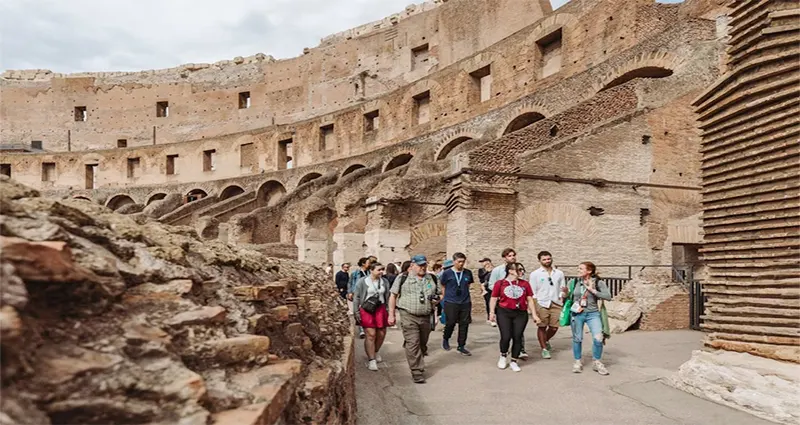Italy is a living museum, and nowhere is this more evident than in its ancient Roman ruins. While the grandeur of sites like the Colosseum and the Roman Forum is undeniable, simply walking through them can be overwhelming. To truly understand the echoes of history and the daily life of an empire, a guided tour is not just a convenience—it’s an essential key to unlocking the past. An expert guide transforms piles of stone and marble fragments into vibrant scenes of political intrigue, gladiatorial combat, and everyday Roman existence.
The Roman Forum and Palatine Hill: A Storyteller’s Canvas
At the heart of Rome lies the Roman Forum, a sprawling complex that was once the political, social, and commercial hub of the ancient world. A guided tour here is invaluable. What appears to be a chaotic collection of columns and arches is, with the help of an expert, revealed to be the very stage for some of the most dramatic moments in history. A guide can point out the exact spot where Cicero delivered his orations, the sacred ground of the Vestal Virgins, and the towering remains of the Temple of Saturn. From the Forum, a tour typically ascends the adjacent Palatine Hill, the legendary birthplace of Rome and the later home of its emperors. A guide can vividly describe the opulent palaces and gardens that once stood here, providing context that is impossible to grasp alone.
The Colosseum: More Than Just a Monument
The Colosseum is one of the world’s most recognizable structures, but its full story is often missed without a guide. A guided tour allows you to bypass long lines and, more importantly, provides a deep dive into the brutal and elaborate spectacles that took place within its walls. Guides can explain the complex engineering behind the structure, from its underground tunnels and trapdoors to its seating hierarchy. Many tours offer “special access” options, allowing you to walk on a reconstructed section of the arena floor, entering through the “Gladiator’s Gate” and gaining a spine-chilling perspective of the venue from a combatant’s point of view.
Beyond Rome: Pompeii and Herculaneum
While Rome is the epicenter of the Roman Empire, a guided tour to the preserved cities of Pompeii and Herculaneum offers a unique and intimate look at Roman provincial life. Frozen in time by the eruption of Mount Vesuvius in A.D. 79, these cities provide an unparalleled glimpse into daily routines, from bakeries and public baths to private homes adorned with intricate frescoes. A guide’s expertise is crucial here, as they can navigate the labyrinthine streets and explain the significance of seemingly small details—the purpose of a public latrine, the meaning of a mosaic, or the story behind a piece of graffiti. The human stories of the eruption, preserved in plaster casts, are made all the more poignant and understandable with a knowledgeable guide to provide context.
What to Look For in a Guided Tour
When choosing a guided tour, consider a few key factors:
- Expertise: Look for tours led by licensed archaeologists, art historians, or local experts who can provide a deeper level of insight.
- Group Size: Small group or private tours often offer a more personalized and interactive experience, allowing for questions and more focused attention.
- Special Access: Tours that include “skip-the-line” access or special entry to areas normally off-limits (like the Colosseum’s underground) are worth the extra cost.
- Themed Tours: Consider tours focused on a specific theme, such as Roman daily life, engineering, or mythology, to align with your personal interests.
A guided tour of Italy’s ancient Roman ruins is an investment in understanding. It transforms a simple walk through history into an unforgettable journey back in time, allowing you to truly feel the spirit of an empire that shaped the world.










